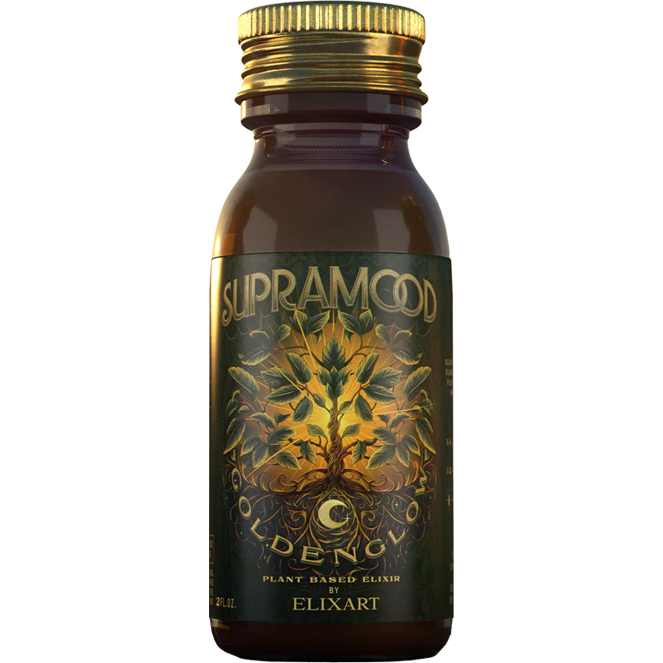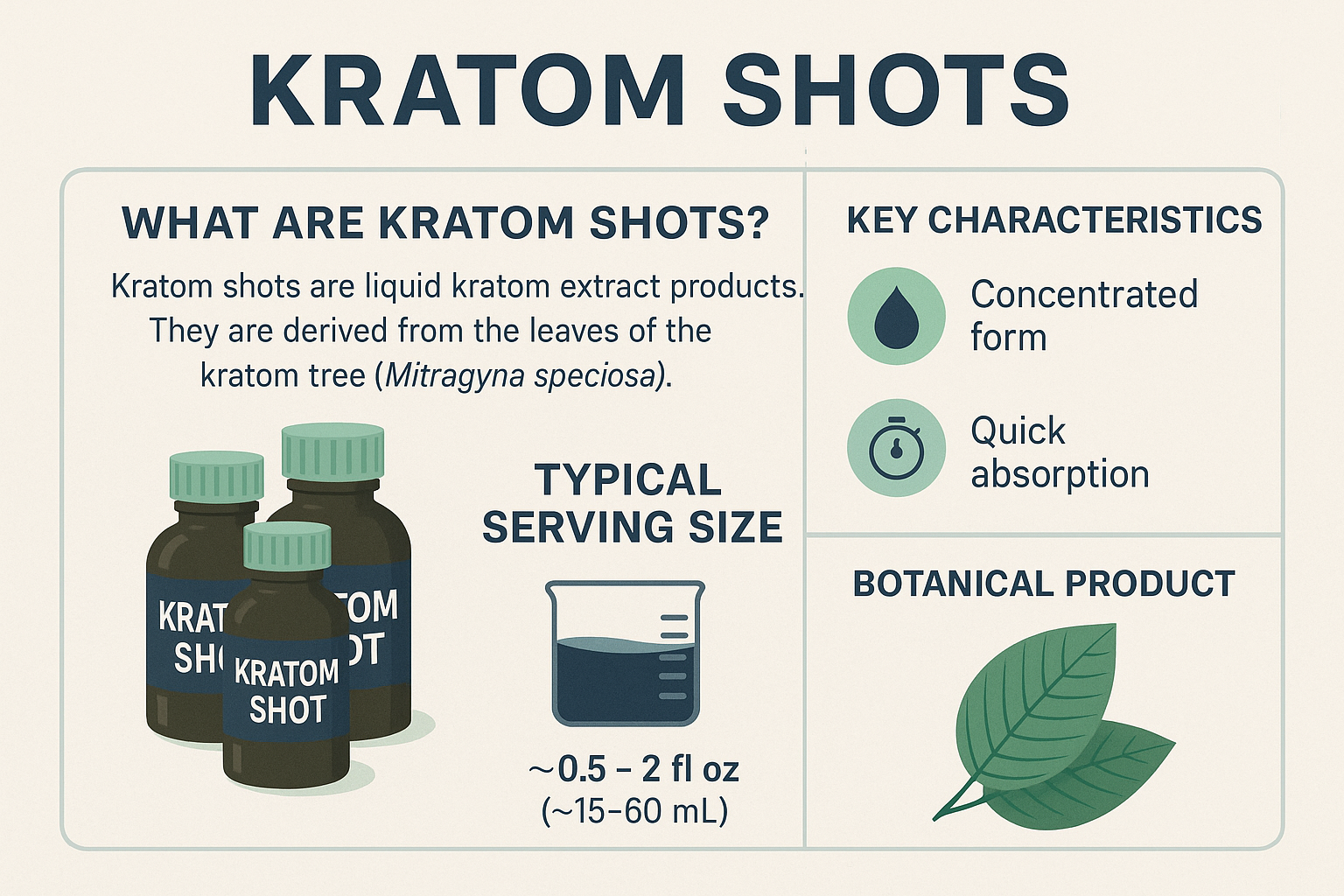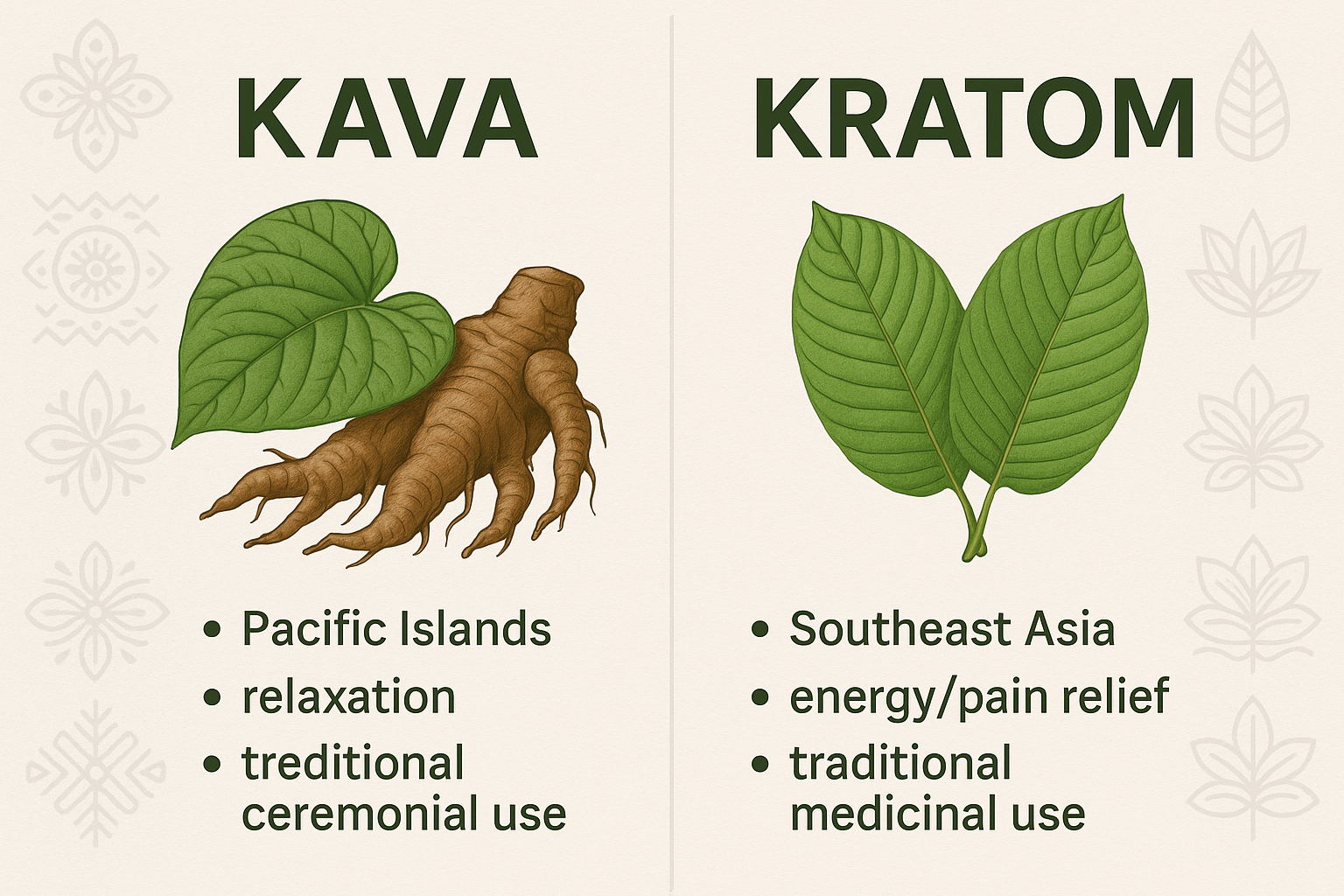Kratom, a tropical tree native to Southeast Asia, has garnered significant attention in the herbal market. Its leaves contain compounds that can have mind-altering effects and are often used for their stimulating and pain-relieving properties. As interest in natural remedies grows, so does the popularity of Kratom.
The versatility of Kratom products—ranging from powders and capsules to potent extracts—has made it accessible to a wide range of users. Among these, Kratom extracts stand out due to their concentrated form and enhanced effects.
Key takeaway: You can easily make your own Kratom extract at home with the right methods and ingredients. This guide will walk you through several techniques, ensuring you have all the information you need to create high-quality Kratom extracts in the comfort of your home.
However, if you're looking for an alternative that combines the benefits of Kava and other powerful plants along with Kratom, you might want to consider trying out the Goldenglow Elixir. This premium herbal drink is brewed from a unique blend of Kava, Passion Fruit, Coconut, Turmeric, Ginger and other potent plants that naturally stimulate focus and presence. You can explore more about this herbal elixir here.
Understanding Kratom
What is Kratom and How Does It Work?
Kratom, scientifically known as Mitragyna speciosa, is a tropical tree native to Southeast Asia. The leaves of this tree have been used for centuries due to their medicinal properties. The primary active compounds in Kratom are mitragynine and 7-hydroxymitragynine, which interact with the body's opioid receptors, often leading to pain relief, euphoria, and increased energy.
Exploring the Potential Health Benefits
Kratom users report various health benefits, which can be categorized into:
- Pain Relief: Mitragynine and 7-hydroxymitragynine bind to opioid receptors, providing significant pain relief.
- Energy Boost: In smaller doses, Kratom tends to act as a stimulant, enhancing alertness and physical energy.
- Mood Enhancement: Many users experience improved mood and reduced anxiety levels.
- Improved Focus: Some strains of Kratom can help with mental clarity and focus.
Different Forms of Kratom Products Available in the Market
Kratom is available in several forms, each catering to different user preferences and needs:
- Powder: This is the most common form. It's versatile and can be mixed into drinks or food.
- Capsules: Ideal for those who want a convenient way to consume Kratom without tasting it. Each capsule contains a pre-measured dose.
- Extracts: These are concentrated forms of Kratom that offer more potent effects. Extracts come in various formats:
- Liquid: Easy to consume and mix with beverages.
- Resin: A thick paste-like substance suitable for vaping or direct ingestion.
- Tinctures: Portable and easy-to-dose liquid extracts.
Recommended Dosages
The appropriate dosage of Kratom can vary based on the form used and the desired effect:
- Powder: Typically, 2-4 grams for mild effects; 5-7 grams for moderate effects; 8+ grams for strong effects.
- Capsules: Usually contain around 0.5 grams of powder per capsule. Beginners might start with 4 capsules (2 grams), adjusting as needed.
- Extracts: These are much stronger. For example, a liquid extract might require only a few drops due to its high concentration.
Understanding these aspects ensures you make informed decisions about using Kratom safely and effectively.
The Legality of Kratom
The legal status of Kratom varies significantly across different states and countries, creating a complex landscape for consumers. In the United States, Kratom is legal at the federal level, but several states and municipalities have imposed their own restrictions or outright bans.
States with Bans:
- Alabama: Classified Kratom as a Schedule I controlled substance.
- Arkansas: Prohibited the sale and possession of Kratom.
- Indiana: Listed it as a synthetic drug, making it illegal.
- Rhode Island: Banned both sale and possession.
- Vermont: Classified certain alkaloids in Kratom as regulated drugs.
Some cities within states where Kratom is otherwise legal have also enacted local bans. For example, San Diego in California and Sarasota in Florida have prohibited its use.
Countries with Bans:
- Australia: Classified as a Schedule 9 substance, making it illegal nationwide.
- Malaysia: Outlawed under Section 30 (3) of the Poisons Act 1952.
- Thailand: Despite being native to the region, Kratom was banned until recent updates allowed limited medicinal use.
- United Kingdom: Included in the Psychoactive Substances Act of 2016, rendering it illegal to produce, supply, or import.
These bans often arise from concerns about potential abuse and lack of regulation. The implications for consumers can be severe; possessing or using Kratom in these areas can lead to significant legal consequences including fines and imprisonment.
Consumers must stay informed about local regulations to avoid inadvertent legal issues. Checking updated legal information before purchasing or using Kratom is essential to ensure compliance with local laws.
Health Implications of Using Kratom Extracts
Potential Health Risks and Side Effects
Kratom extracts, while potent and effective, come with their own set of health risks and side effects. Users may experience:
- Nausea and Vomiting: High doses or frequent use can lead to gastrointestinal discomfort.
- Dizziness and Drowsiness: The sedative properties of Kratom can cause lightheadedness.
- Dependence: Regular usage might lead to physical dependence and withdrawal symptoms.
- Liver Toxicity: Some cases link long-term use to liver damage.
These potential risks highlight the necessity for users to exercise caution.
Importance of Consulting Healthcare Professionals
Before incorporating Kratom extracts into your routine, consulting a healthcare professional is crucial. This step ensures:
- Personalized Advice: A doctor can provide guidance based on your unique medical history.
- Preventing Interactions: Kratom may interact with medications or preexisting conditions.
- Monitoring Usage: Regular check-ups help in managing any adverse effects that may arise.
Health disclaimers are essential when exploring how to make Kratom extract at home. Always prioritize safety and informed decision-making for the best experience.
Methods for Making Kratom Extract at Home
Water-based Extraction Method
Creating a water-based kratom extract at home is straightforward and requires minimal ingredients. Here’s how you can achieve it:
Ingredients and Equipment:
- Kratom powder or leaves (50 grams)
- Distilled water (500 ml)
- Lemon juice or citric acid
- A large pot
- A stove
- A strainer or cheesecloth
- A glass container for storage
Step-by-Step Process:
- Preparing the Mixture:
- Take 50 grams of kratom powder or leaves and place them in a large pot.
- Add 500 ml of distilled water to the pot, ensuring that the kratom material is fully submerged.
- Adding Acid:
- Squeeze the juice of one lemon into the mixture or add a teaspoon of citric acid. The acidity helps in breaking down the plant material and releasing the alkaloids effectively.
- Heating the Mixture:
- Place the pot on a stove and heat it gently over medium-low heat.
- Bring the mixture to a simmer, not a rolling boil, and maintain this temperature.
- Allow it to simmer for about 20-30 minutes, stirring occasionally.
- Straining the Liquid:
- After simmering, remove the pot from heat and let it cool slightly.
- Use a strainer or cheesecloth to filter out the kratom particles from the liquid. Pour the liquid into another container, ensuring no plant material passes through.
- Re-extracting (Optional):
- To maximize extraction, you can repeat the process with fresh water by pouring another 500 ml of distilled water into the strained kratom material.
- Simmer again for another 20 minutes and strain once more.
- Reducing the Liquid:
- Combine both batches of strained liquid back into the pot.
- Heat gently until it reduces to your desired consistency. The longer you simmer, the more concentrated your extract will become.
- Storage:
- Once cooled, transfer your kratom extract into a glass container for storage.
- Keep it in a cool, dark place to preserve its potency.
Importance of Heating:
Heating during extraction is crucial as it activates the alkaloids present in kratom leaves or powder. These alkaloids are responsible for kratom's effects and benefits. Proper heating ensures maximum potency in your final extract.
The simplicity of this method makes it accessible for those new to making extracts at home. With basic kitchen equipment and readily available ingredients, you can produce a potent water-based kratom extract suitable for various uses.
Ethanol Extraction Technique
The ethanol extraction technique is a popular method for creating potent Kratom extracts at home. This approach uses ethanol as a solvent to effectively pull the desired alkaloids from Kratom material, offering a robust and concentrated final product.
Ingredients and Tools Needed:
- Ethanol (high-proof alcohol)
- Citric acid or lemon juice
- Kratom powder or fresh leaves
- Glass jar with a lid
- Cheesecloth or coffee filter
- Measuring cups and spoons
- Heat source (stove or hot plate)
- Non-reactive saucepan
Steps for Ethanol Extraction:
- Preparation of Materials:Choose between fresh leaves or powdered Kratom as your starting material.
- Measure out the desired amount of Kratom (typically 100 grams).
- Mixing Solvents:Place the Kratom in a glass jar.
- Pour enough ethanol into the jar to cover the Kratom completely.
- Add a few tablespoons of citric acid or fresh lemon juice to enhance extraction efficiency by lowering the pH level.
- Combining and Sealing:Seal the jar tightly and shake it vigorously to ensure all materials are mixed well.
- Allow the mixture to sit for approximately one week, shaking it daily to keep the contents agitated.
- Filtration Process:After one week, strain the mixture using cheesecloth or a coffee filter into a non-reactive saucepan.
- Squeeze out as much liquid as possible from the plant material to maximize yield.
- Evaporation Stage:Place the saucepan on a heat source set to low heat.
- Gently heat until most of the ethanol has evaporated, leaving behind a thick, concentrated extract.
- Storage:Transfer the remaining extract into a small, airtight container for storage.
Role of Citric Acid or Lemon Juice:
Adding citric acid or lemon juice plays a crucial role in this process by creating an acidic environment that enhances alkaloid extraction from Kratom leaves or powder. This step ensures you achieve maximum potency in your homemade extract.
Ethanol extraction is an efficient method that provides high-quality results and can be done with materials easily accessible at home.
Resin Extraction Method
Creating a potent kratom resin extract at home is an engaging yet straightforward process. This method involves both freezing and boiling, which helps to concentrate the active alkaloids in the kratom plant material.
Ingredients and Tools Needed
Before diving into the procedure, ensure you have the following:
- Kratom Powder or Fresh Leaves: Either can be used as your starting material.
- Water: Acts as the primary solvent.
- Citric Acid or Lemon Juice: Enhances extraction efficiency by maintaining an acidic environment.
- Freezer-Safe Container: For freezing the kratom mixture.
- Pot and Stove: For boiling.
- Cheesecloth or Fine Strainer: To filter out plant material.
- Glass Jar: For storing the final resin extract.
Step-by-Step Process
- Prepare the Mixture:
- Combine your kratom powder or fresh leaves with water in a freezer-safe container.
- Add a small amount of citric acid or lemon juice to the mix, ensuring it stays acidic.
- Freeze the Mixture:
- Place the container in the freezer and let it freeze completely. This step helps break down cell walls, making it easier to extract alkaloids later.
- Boil and Simmer:
- Once frozen, transfer the mixture to a pot and bring it to a boil on medium heat.
- After reaching a boil, reduce the heat and let it simmer for about 30 minutes. This heating process activates the alkaloids.
- Filter the Liquid:
- Use cheesecloth or a fine strainer to filter out any plant material from the liquid. You should be left with a concentrated solution.
- Further Reduction:
- Return the filtered liquid to the pot and simmer until most of the water evaporates, leaving behind a thick, paste-like substance.
- Formation of Resin:
- Allow this paste to cool down. It will solidify into a resin-like consistency as it cools.
- Storage:
- Transfer your homemade kratom resin into a glass jar for storage. Keep it in a cool, dark place to maintain its potency.
Resin extracts are highly concentrated forms of kratom that offer robust results with minimal dosage compared to traditional powder forms. This method is ideal for those looking for an intense experience without consuming large quantities of plant matter.
Types of Homemade Kratom Extracts You Can Make
When exploring the world of homemade kratom extracts, you'll come across various options that cater to your preferences and needs. Two popular types are tinctures and powders, each with its own advantages and disadvantages.
Tinctures
Tinctures are liquid extracts made by soaking kratom leaves in alcohol or another solvent. This process extracts the active compounds from the leaves, resulting in a concentrated form of kratom.
Advantages of Tinctures
- Convenience: Tinctures are easy to carry and use; a few drops can deliver a potent dose.
- Rapid Absorption: Liquid form allows for quicker absorption into the bloodstream.
- Long Shelf Life: Properly stored tinctures can remain potent for an extended period.
Disadvantages of Tinctures
- Alcohol Content: Some users might be sensitive to the alcohol used in tinctures.
- Taste: The strong flavor might be off-putting for some individuals.
Powders
Powders are another popular form of homemade kratom extract. They are made by grinding dried kratom leaves into a fine powder. This powder can then be used in various ways, such as making teas or adding it to smoothies.
Advantages of Powders
- Versatility: Kratom powder can be added to various foods and drinks, offering flexibility in consumption.
- Control Over Dosage: Easy to measure precise amounts according to personal needs.
Disadvantages of Powders
- Preparation Time: Making kratom powder extract requires more time and effort compared to tinctures.
- Storage Concerns: Powders may have a shorter shelf life if not stored properly, risking loss of potency.
Choosing between these homemade extracts depends on individual preferences and how you plan to incorporate kratom into your routine. Each type offers unique benefits that cater to different lifestyles and requirements.
Proper Storage for Long-lasting Potency in Your DIY Extracts
Ensuring that your homemade kratom extracts maintain their potency and quality over time involves careful storage practices. Here are some key guidelines to follow:
Ideal Storage Conditions
- Temperature Control: Store your kratom extracts in a cool, dark place. High temperatures can degrade the alkaloids, reducing the effectiveness of your extract.
- Avoid Light Exposure: Light can break down active compounds in kratom. Use opaque containers or store them in a dark cabinet.
- Humidity Management: Moisture can lead to mold growth and spoilage. Make sure the storage area is dry, and always use airtight containers.
Container Recommendations
- Airtight Glass Jars: These are excellent for storing kratom powder and resin extracts. Glass doesn't react with kratom, ensuring purity.
- Dark-Tinted Bottles for Tinctures: Amber or cobalt blue bottles help block light, preserving the integrity of liquid extracts.
- Vacuum-Sealed Bags: If you produce large batches of extract, vacuum-sealing smaller portions can help maintain freshness until you're ready to use them.
Additional Tips
Label your containers with the date of extraction to keep track of freshness.
- Rotate your stock so that older extracts are used first.
- Avoid frequent opening of storage containers to minimize exposure to air.
Proper storage for kratom extract is about maintaining an environment that minimizes exposure to elements that can degrade its quality. By following these best practices, you ensure your DIY efforts yield potent and effective results over time.
Conclusion: Embrace The Art Of DIY Kratom Extraction!
Creating your own DIY kratom extract is a rewarding and educational experience. With the right methods and ingredients, you can produce potent and effective extracts at home.
- Always prioritize safety and consult healthcare professionals before use.
- Experiment with different extraction methods to find what works best for you.
- Enjoy the process of learning and refining your technique.
By making your own kratom extracts, you gain control over the quality and potency of your product. Dive into this exciting venture and discover the benefits of homemade kratom extracts. Happy extracting!







Leave a comment
This site is protected by hCaptcha and the hCaptcha Privacy Policy and Terms of Service apply.